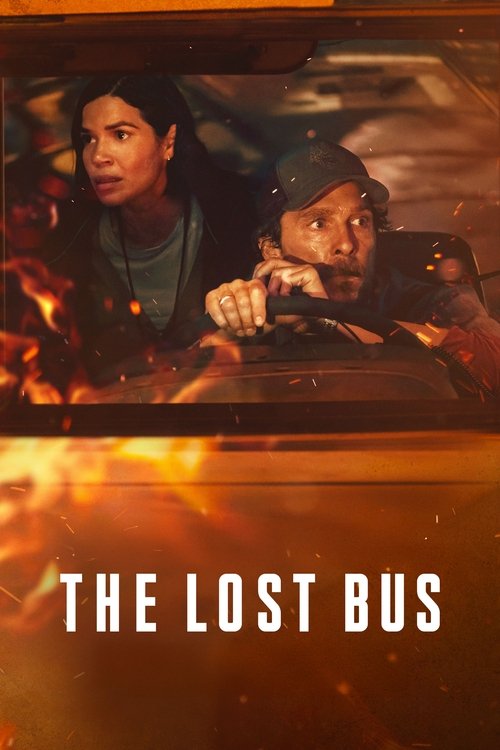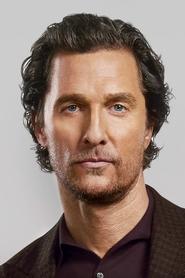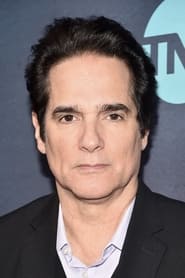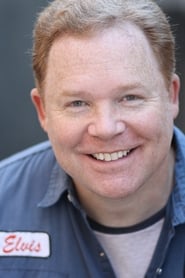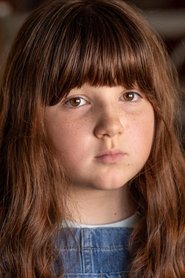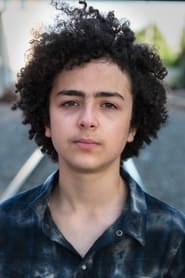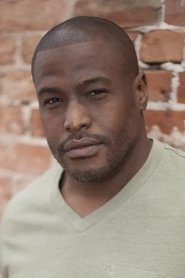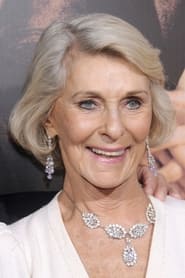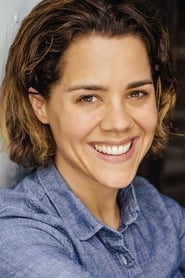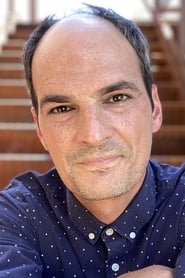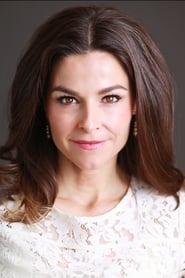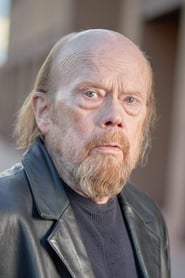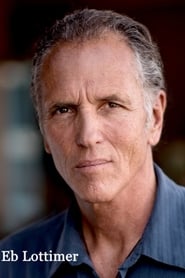Ask Your Own Question
What is the plot?
The film opens at the Archaeological Society's annual banquet, where Scrooge McDuck stands at a podium delivering a boastful speech about having recovered Collie Baba's hoard. A lamp--a small, ornately carved object that once housed a powerful spirit--sits in the room's possession, and the spirit known as the Genie notices the presence of Merlock among the assembled guests. The Genie intercepts Scrooge mid-speech, pulls him offstage and hustles him away through the hotel's corridors with urgency, warning that Merlock is nearby because he has come after the lamp. In a guestroom the Genie conceals the lamp inside the chandelier. He uses his magic to shrink both himself and Scrooge so they can both fit within the fixture, successfully evading Merlock and Merlock's servant Dijon, who briefly searches the area.
When the intruders depart, the Genie restores Scrooge to his normal size. The Genie confides to Scrooge that he never requested the existence he leads as a wish-bound servant and longs for a life of his own, like the children Huey, Dewey and Louie. Seeing Merlock circling outside in the form of a giant eagle, Scrooge tells the Genie to return into the lamp for safety, intent on taking the lamp back to his Money Bin where he thinks it will be secure. As the two exit the room, Scrooge collides with a passing room-service trolley; the lamp falls from inside his coat. In the resulting confusion Scrooge snatches up a gravy boat that looks nearly identical to the lamp, and he flees to the hotel roof and to the waiting helicopter flown by Launchpad McQuack. Merlock spots Scrooge's escape and gives chase.
Dijon, having watched Scrooge leave the guestroom, finds the actual lamp moments later on the floor. The Genie, inside the lamp, speaks to Dijon and persuades the servant to keep the lamp for himself rather than return to serving Merlock, promising that Dijon can have power rather than continue in servitude. Dijon pockets the object.
Back at the Money Bin, Scrooge returns expecting to conceal the lamp in his vault. Instead he finds Dijon sitting in Scrooge's office chair. Dijon reveals that the object Scrooge had was only a gravy boat and that Dijon holds the genuine lamp. Dijon announces that he used the lamp's first wish to take legal ownership of Scrooge's entire business empire. He then has Scrooge arrested on trespassing charges and locked in jail.
Huey, Dewey and Louie, along with Webby Vanderquack, Launchpad, Mrs. Beakley and the family butler Duckworth, orchestrate Scrooge's release. They tell Scrooge that Dijon's wish has placed the entire Money Bin under Dijon's legal control and that the only way to rescue the Genie and reclaim Scrooge's fortune is to retrieve the lamp without triggering the Bin's complex security systems. Scrooge, knowing the alarm triggers and shutdown methods intimately, agrees to a plan: Launchpad will fly the older Scrooge over the Money Bin and Scrooge will parachute onto the roof while the children and Webby approach from the ground to infiltrate and disable the security devices.
Launchpad pilots his plane while Scrooge jumps and lands on the roof. Huey, Dewey, Louie and Webby slip in through ground-level weaknesses and systematically deactivate the alarms the way Scrooge teaches them. Their infiltration proceeds as planned, and Scrooge forces open a way toward his office. Unknown to them, Merlock, now in insect form, slips through the front entrance and makes his way toward the office as well.
Inside the Money Bin, Scrooge creeps through corridors and reaches his office door. The Genie, sensing the proximity of his master and seeing Dijon's back turned, creates a distraction to draw Dijon away from the lamp sitting on Scrooge's desk. Scrooge sneaks up behind Dijon and seizes the lamp; in the same instant Merlock reaches the office and reveals himself, transforming from bug to his full humanoid form. He clambers onto the lamp, stuns Scrooge, and places his talisman atop the lamp. The talisman binds Merlock to an expanded set of powers, granting him the ability to make unlimited wishes.
Merlock immediately commands the Genie to punish Dijon for supposed betrayal; the Genie complies and turns Dijon into a pig as retribution. Merlock then commands the Genie to alter the Money Bin itself, warping it into an enormous, otherworldly fortress. With a wave of his magic, the fortress uproots from the ground and begins to float skyward, carrying the Money Bin away from Duckburg. Merlock orders the transformed fortress to transport him back to his homeland. Scrooge, clinging to the exterior, threatens Merlock physically, demanding the Bin be returned. Merlock responds by having the Genie generate powerful gusts of wind to knock Scrooge off the floating structure.
As Scrooge struggles to maintain his grip against the conjured winds, Huey, Dewey, Louie and Webby arrive on the scene atop the traveling fortress. Huey takes precise aim with his slingshot and fires a small glass marble at the lamp that Merlock clutches. The marble strikes the lamp, knocking it free from Merlock's grasp. Louie snatches the lamp mid-air and hurls it toward Scrooge. Scrooge reaches, but he miscalculates; he fails to catch the lamp and both he and the lamp begin to plummet toward the earth below.
Merlock, having recovered his talisman and empowered again, transforms into a massive griffin and dives after the falling lamp. The Genie attempts to intervene to stop Merlock, but Merlock flings the Genie aside and races downward. He reaches the lamp seconds before Scrooge and grips it once more. Scrooge, determined, manages to climb onto Merlock's back and strikes at the hand clutching the talisman. His blow causes Merlock to lose hold of the talisman. Because Merlock's extraordinary metamorphic abilities derive from that talisman, its fall severs his power; immediately Merlock reverts to his natural human--or creature--form and tumbles to his death, striking the cliffside below and dying from the fall.
Scrooge grabs the lamp amid the chaos. The Genie, whose survival is bound to the lamp, warns that Scrooge must use a wish to save himself and the others from their current peril. Scrooge speaks his second wish into the object with urgency: he wishes to transport himself, his family, the Genie and the Money Bin back to Duckburg and to a safe condition. The lamp responds and the large, floating fortress carrying the Money Bin stutters, reverses and reappears over its original location. The family, the children and their allies stand together on solid ground in Duckburg, the Money Bin restored to its rightful place. They embrace and rejoice at the sight of familiar surroundings and the return of their possessions.
Scrooge realizes that one wish remains. He tells the Genie that he plans to end all magic by wishing the lamp buried deep within the earth, but then he stops himself and chooses another course. Instead of consigning the lamp to geological oblivion, Scrooge uses his final wish to grant the Genie the life he has long wanted: he wants the Genie to become a real boy, free from the constraints of servitude. The lamp responds; the Genie's form reshapes into that of a human child. As the Genie completes his transformation, the lamp disintegrates into dust, indicating that its magical contracts have been dissolved and that the Genie's enslavement is ended.
The newly human boy runs off to play with Huey, Dewey, Louie and Webby, laughing as he leaves Scrooge and the others behind. Scrooge, keen to savor the victory, dives into his money vault for a celebratory swim. While he glides through his coins, he notices Dijon restored to his original humanoid form. Dijon, having resumed his old self after the talisman's destruction and the Genie's prior reversals, is now stuffing gold coins into his pants and the two engage in a brief chase: Dijon bolts from the Money Bin with Scrooge in hot pursuit, the film cutting to the pair running off as the final visual of the featured action.
The closing shots return briefly to the characters: the Genie, now a boy, plays with the children; Webby, Huey, Dewey and Louie cluster around him; Mrs. Beakley and Launchpad watch Scrooge pursue Dijon. The scene ends with Scrooge chasing Dijon out of frame, leaving the status of Dijon's attempted theft unresolved on-screen as the story wraps with the family reunited and the Genie freed.
What is the ending?
The ending of The Lost Bus (2025) shows Kevin McKay, the bus driver, and Mary Ludwig, the teacher, successfully leading the 22 children to safety after a harrowing escape from the 2018 Camp Fire. Despite the intense danger and obstacles, all the children survive, and Kevin and Mary emerge as heroes, though emotionally and physically exhausted by the ordeal.
Expanding on the ending scene by scene:
As the film approaches its climax, Kevin McKay is driving the bus through the rapidly advancing wildfire, smoke thick in the air, visibility near zero. The children on board are frightened, some crying, others trying to stay calm under Mary Ludwig's steady guidance. Kevin's focus is absolute, navigating treacherous roads blocked by fallen trees and fire debris.
At one point, the bus is forced to stop due to a fallen power line sparking dangerously close. Kevin and Mary quickly organize the children to stay low and quiet while Kevin assesses the situation. He calls the bus depot dispatcher, Ruby, who provides updates on safe routes and fire containment efforts. The tension is palpable as the fire's roar grows louder.
They resume their journey, taking a detour through a narrow canyon where the heat is intense and flames lick the roadside. Kevin's son, Shaun, who is on the bus, shows signs of distress but is comforted by Mary. Kevin's mother, Sherry, who is disabled and had been waiting for Kevin at home, is shown in a brief flashback, underscoring Kevin's personal stakes in surviving this ordeal.
As the bus nears the town's edge, Cal Fire Division Chief Ray Martinez and Battalion Chief Jen Kissoon coordinate a rescue operation. They clear a path through the fire lines, allowing Kevin to drive the bus to a designated safe zone. The children disembark, exhausted but safe, greeted by emergency responders.
The final scenes focus on the emotional release among the characters. Kevin and Mary share a moment of quiet relief, acknowledging the trauma they endured. The children are reunited with their families, and Kevin embraces his son Shaun. The film closes with a somber reminder of the wildfire's devastation but highlights the resilience and courage of those who survived.
In terms of character fates at the end:
- Kevin McKay survives, physically worn but emotionally strengthened by his role in saving the children.
- Mary Ludwig remains a steadfast protector, her dedication unwavering throughout the crisis.
- Shaun McKay, Kevin's son, is safe, symbolizing hope and continuity.
- Sherry McKay, Kevin's disabled mother, is shown in flashbacks but her fate is not directly depicted at the end.
- The 22 children all survive, thanks to Kevin and Mary's efforts.
- Cal Fire officials Ray Martinez and Jen Kissoon successfully facilitate the rescue, underscoring the coordinated emergency response.
The ending is a detailed, scene-by-scene depiction of survival against overwhelming odds, emphasizing the human spirit and community effort during a natural disaster.
Who dies?
In the movie "The Lost Bus" produced in 2025, the narrative revolves around a heroic rescue during the 2018 Camp Fire in California. The film focuses on Kevin McKay, a school bus driver, who risks everything to save 22 children and two teachers from the inferno. While the movie is based on real events, it does not explicitly detail the deaths of characters within the story itself. However, the context of the Camp Fire, which killed 85 people, provides a backdrop of danger and urgency.
The plot centers on Kevin's determination to drive the children to safety despite the raging fire. The bus encounters numerous challenges, including smoke-filled conditions and engine failure. Kevin's motivation to reunite with his son and be a better father figure drives his actions throughout the ordeal.
The film does not depict the deaths of any characters within the bus. Instead, it highlights the survival and rescue efforts. The real-life Camp Fire was devastating, causing widespread destruction and loss of life, but the movie focuses on the heroic actions of Kevin McKay and the successful evacuation of the children.
The emotional and physical challenges faced by the characters are intense. Kevin and the teachers, including Mary, work together to keep the children safe, using makeshift methods to help them breathe through the smoke. The tension builds as they navigate through the fire, with Kevin's resolve tested by the engine failure and the approaching flames. Ultimately, the film portrays a story of survival and resilience in the face of catastrophic danger.
Is there a post-credit scene?
Yes, The Lost Bus (2025) has a post-credit scene. After the main story concludes with Kevin McKay and the children trapped on the bus surrounded by fire, the post-credit scene provides additional closure or insight into the characters' fates or the aftermath of the events. However, the detailed description of the post-credit scene itself is not explicitly outlined in the available search results.
The closest relevant information comes from detailed ending breakdown videos and analyses, which discuss the film's conclusion and Kevin's journey but do not specifically describe the post-credit scene content. These sources focus on the main narrative resolution, Kevin's redemption, and the survival of the children, but do not mention a specific scene after the credits.
Therefore, while it is confirmed that a post-credit scene exists, the exact content or description of that scene is not detailed in the current search results. If you want a precise description, viewing the film's credits or the post-credit segment directly would be necessary.
What challenges do Kevin and Mary face in keeping the children calm and safe on the bus during the wildfire?
Kevin and Mary struggle to keep the children calm amid the chaos of the wildfire. Smoke pours into the bus through the air conditioning, forcing Kevin to turn it off. They caution the children to stay away from windows and floors due to heat. At one point, Mary contemplates letting the children fall asleep to avoid the horror if the fire reaches them, but Kevin stops her from thinking that way. They also face threats from panicked residents trying to break into the bus, including a man with a gun whom Kevin physically removes from the bus doors.
How does Kevin's personal backstory and relationship with his son Shaun influence his actions during the crisis?
Kevin is in a dark period of his life, estranged from his wife and hated by his son Shaun. He recalls a violent confrontation with his own father, which parallels Shaun's harsh words to him during the crisis. This personal turmoil adds emotional depth to Kevin's character and influences his determination to protect the children and perhaps redeem himself in his son's eyes.
What role does Fire Chief Ray Martinez play in the film, and how does his leadership impact the firefighting efforts?
Fire Chief Ray Martinez, played by Yul Vazquez, leads the firefighting efforts during the Camp Fire. Despite his strong leadership and tactical decisions, the fire spreads too rapidly due to intense winds, forcing him to shift the mission from firefighting to rescue operations. His role highlights the overwhelming power of the wildfire and the difficult decisions faced by emergency responders.
What specific moments of danger or suspense occur on the bus as the wildfire surrounds it?
The bus becomes completely surrounded by fire late in the film, creating intense suspense. Smoke fills the bus, heat threatens the children, and panicked residents attempt to break in, including a gunman. Kevin and Mary must navigate through traffic, find shortcuts, and shield the children from witnessing horrific scenes outside, such as people on fire. These moments create a white-knuckle, immersive experience focused on survival.
How does the film depict the interaction between the bus occupants and the outside world during the wildfire?
The film shows Kevin driving past groups of pedestrians fleeing the fire, who warn him about the dangers ahead and advise keeping the children from seeing the carnage. Outside, panicked residents try to break into the bus, some armed and desperate. The contrast between the trapped bus occupants and the chaos outside emphasizes the isolation and peril faced by Kevin, Mary, and the children.
Is this family friendly?
The Lost Bus (2025) is rated R, primarily for language, and is not considered family-friendly for young children. While the film centers on the heroic efforts of a bus driver and teacher to protect 22 children during the 2018 Camp Fire, it contains several intense and potentially upsetting elements that may disturb sensitive viewers, especially children.
Potentially Objectionable or Upsetting Scenes and Aspects
Intense Peril and Realistic Danger
Throughout the film, the children on the bus are in constant, palpable danger as the wildfire rages around them. Smoke pours into the bus, forcing the adults to shut off the air conditioning; the windows and floor grow dangerously hot, and the adults must instruct the children to avoid touching them. The sense of suffocation, heat, and imminent threat is visceral and unrelenting, which could be frightening for younger viewers.
Violence and Threats
At one point, panicked residents attempt to break into the bus, and one man brandishes a gun, threatening the bus driver and even firing the weapon. The driver is forced to physically defend the children by kicking the armed man away from the bus doors. The scene is chaotic and tense, with clear mortal danger to both the children and adults.
Emotional Distress and Adult Themes
The bus driver, Kevin, grapples with painful memories of a violent, abusive relationship with his own father, including a flashback where his father attacks him and wishes him dead. These scenes are emotionally raw and deal with themes of family trauma, regret, and the desire for redemption, which may be heavy for some viewers. The teacher, Mary, at one point quietly suggests to Kevin that it might be kinder to let the children sleep rather than face the terror of the fire, a moment that underscores the desperation and emotional weight of their situation.
Language
The film contains moderate profanity, consistent with its R rating, which may not be suitable for all families.
No Sexual Content or Substance Use
There is no sexual content or depiction of alcohol, drugs, or smoking.
Summary
The Lost Bus is a gripping, emotionally charged disaster thriller that authentically portrays the terror and heroism of its real-life inspiration. However, its realistic depiction of life-threatening danger, scenes of violence and armed threats, intense emotional trauma, and strong language make it inappropriate for young children and potentially distressing for sensitive viewers, despite its ultimately uplifting themes of courage and second chances. Parents should consider the maturity and sensitivity of their children before viewing.

